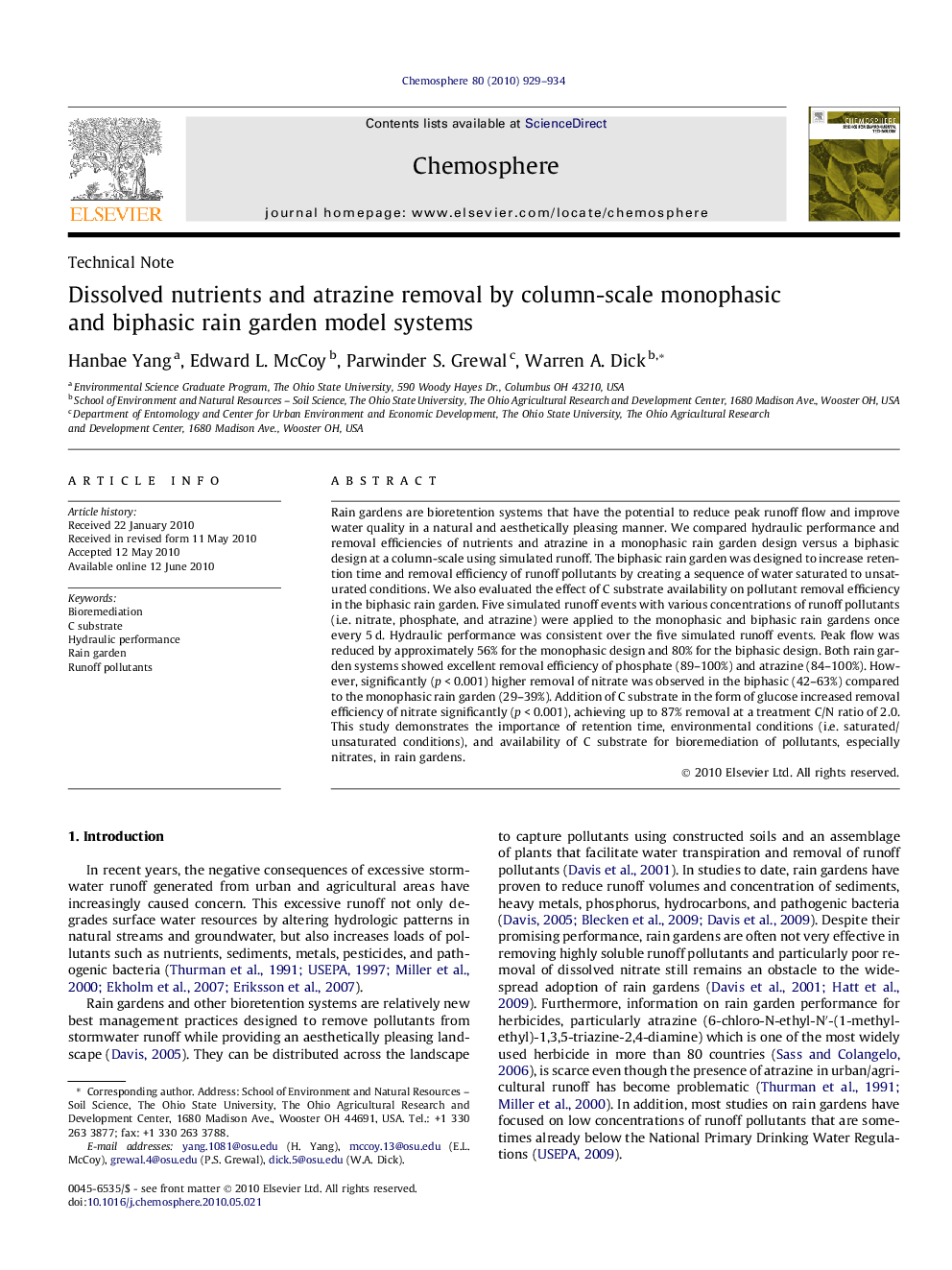| Article ID | Journal | Published Year | Pages | File Type |
|---|---|---|---|---|
| 4411570 | Chemosphere | 2010 | 6 Pages |
Rain gardens are bioretention systems that have the potential to reduce peak runoff flow and improve water quality in a natural and aesthetically pleasing manner. We compared hydraulic performance and removal efficiencies of nutrients and atrazine in a monophasic rain garden design versus a biphasic design at a column-scale using simulated runoff. The biphasic rain garden was designed to increase retention time and removal efficiency of runoff pollutants by creating a sequence of water saturated to unsaturated conditions. We also evaluated the effect of C substrate availability on pollutant removal efficiency in the biphasic rain garden. Five simulated runoff events with various concentrations of runoff pollutants (i.e. nitrate, phosphate, and atrazine) were applied to the monophasic and biphasic rain gardens once every 5 d. Hydraulic performance was consistent over the five simulated runoff events. Peak flow was reduced by approximately 56% for the monophasic design and 80% for the biphasic design. Both rain garden systems showed excellent removal efficiency of phosphate (89–100%) and atrazine (84–100%). However, significantly (p < 0.001) higher removal of nitrate was observed in the biphasic (42–63%) compared to the monophasic rain garden (29–39%). Addition of C substrate in the form of glucose increased removal efficiency of nitrate significantly (p < 0.001), achieving up to 87% removal at a treatment C/N ratio of 2.0. This study demonstrates the importance of retention time, environmental conditions (i.e. saturated/unsaturated conditions), and availability of C substrate for bioremediation of pollutants, especially nitrates, in rain gardens.
